Step aside Canon 1D X Mark II and Nikon D5 – Sony has just announced its A9, a high-end, full-frame sports camera. With a 24 MP stacked CMOS sensor, a whopping 20 fps continuous shooting rate without blackouts, up to 1/32,000 shutter speed (electronic, mechanical up to 1/8000), a 241 RAW image buffer, 693 on-sensor phase detection autofocus points occupying 93% of the viewfinder, AF joystick, full-frame 4K video capture, in-body five-axis image stabilization, fully weather sealed body, larger battery capacity, a built-in Ethernet port and dual SD card slots, the Sony A9 is one serious monster aimed at directly competing with the top-tier DSLR cameras. It is a pricey camera at $4,500 MSRP, but it is still $2K cheaper than the Nikon D5 and offers features the D5 simply cannot compete with. The Sony A9 is a very exciting release for a number of reasons.
First of all, this is the first time a mirrorless camera is aiming at something mirrorless has been struggling with when compared to DSLRs, which is autofocus speed, subject tracking and blackouts. While it is hard to say how well the new AF system on the A9 is going to be compared to high-end DSLR cameras, the message here is clear – Sony is going to do what it takes to make on-sensor AF as good as a dedicated phase-detection AF system. Second, the Sony A9 is a proof of concept that DSLRs have reached their limits for continuous shooting rate due to the presence of the mirror mechanism. While the Canon 1D X Mark II and Nikon D5 are limited to 12-14 fps of continuous shooting, the Sony A9 takes this to a whole new level at 20 fps. If it was not for sensor readout and bandwidth limitation issues, I am sure Sony could have easily gone over 20 fps. Third, the Sony A9 has the world’s first full-frame stacked CMOS sensor:
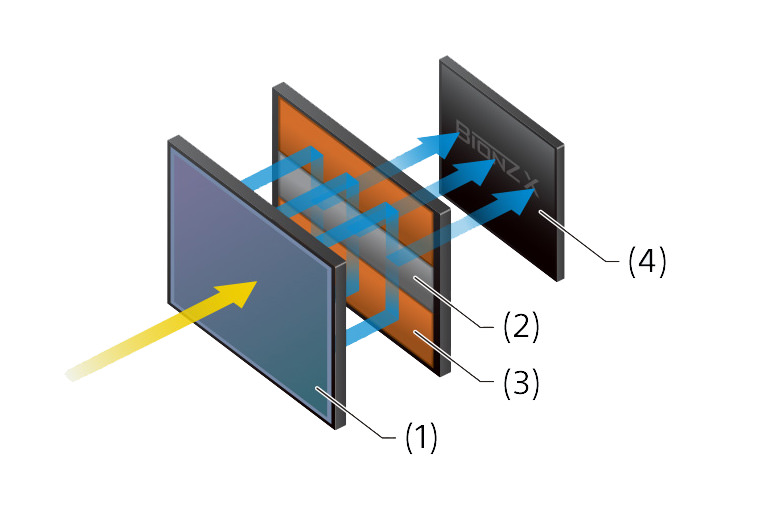
While this might sound gibberish for those who don’t understand sensor technology, a stacked sensor is capable of insanely fast readout speeds, because data is temporarily stored in the integral memory of the sensor (#2 in the above graph) and a high-speed signal processing circuit (#3) is able to retrieve and pass all the data to the image processing engine (#4) much quicker than traditional sensor design that reads data from top to bottom of the pixel area (#1). Because of this sensor technology alone, the camera is going to have massive advantages for not just continuous shooting rates, but also for capturing high-resolution 4K video. In addition, the stacked sensor allows for much quicker analysis of the overall sensor data, which translates to increased focusing performance for both contrast and phase-detection autofocus.
To understand differences between this new stacked sensor technology when compared to a traditional DSLR, take a look at the below video:
As you can see, the stacked sensor on the Sony A9 opens up many opportunities for photographers. When using an electronic shutter, you no longer have to worry about either mirror slap or shutter shock either, which is very impressive.
Fourth, the Sony A9 pretty much lifts the limitations of the traditional autofocus system by allowing phase-detection AF points to be spread pretty much throughout the viewfinder:
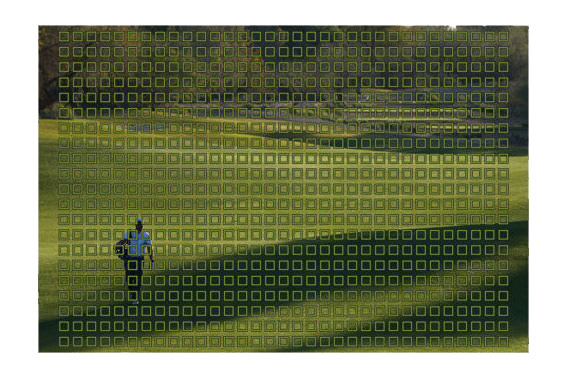
You no longer have to worry about focus point spread and focus points being more accurate in the center of the frame. On-sensor phase detection pixels are going to perform very similarly no matter where they are located on the sensor, which means that you could continue tracking a subject even when they are not in the center of the frame. As long as you keep the subject within the viewfinder, you are good to go.
At this point, it is hard to say how good the autofocus system on the Sony A9 is going to be when compared to cameras like Canon 1D X Mark II and Nikon D5, but you can take a look at the below interview with Gene Lower, a professional sports photographer from Arizona who is very pleased with the performance of the camera:
What’s impressive about the A9 is also its huge memory buffer that can fit up to 241 RAW images. With a 20 fps continuous shooting speed, one can continuously capture a scene for 12 seconds, which is more than enough for most sports and wildlife photography needs. The only puzzling part to me is the use of SD cards – I was expecting to see something faster and more powerful like XQD on the Sony A9. Speaking of which, the Sony A9 now has two memory card slots (finally!), but only one of them is UHS-II compatible. I think the idea here is that one would use a UHS-II card for shooting fast action, while the second memory card slot is used primarily for backup and the speed is not as important. I am not sure how Sony is planning to address buffer writing to two memory cards though and I hope that the camera won’t slow down while the second slot is being written to.
The biggest hole that Sony needs to patch as quickly as possible, is lack of good super telephoto options. At this time, the longest native lens Sony has for the FE mount is the newly announced Sony 100-400mm f/4.5-5.6 GM OSS. While it looks like a great lens, it cannot compete with a super telephoto prime in any way. If Sony can quickly crank out 400mm, 500mm and 600mm lenses in the next 12+ months, the Sony A9 will be taken very seriously by many professional photographers. But until then, it will be tough to get sports and wildlife photographers to switch. Sony needs native FE mount super telephoto lenses as quickly as possible – adapting existing glass made for Sony Alpha / Minolta mounts is not going to be a good solution, since lenses need to be able to take advantage of the new technology on the Sony A9.
Fifth, Sony is finally addressing one of the biggest issues with mirrorless cameras – battery life. Thanks to the much more powerful and efficient NP-FZ100 battery, the Sony A9 is capable of shooting many more images (Sony claims 2.2x more battery power) – up to 650 according to CIPA testing. While this might sound still pretty far from a DSLR can do, always take CIPA numbers with a grain of salt. According to the video above, the photographer could get over 1,000 shots and only consumed about a quarter of the battery. So for high-speed shooting and situations where one can turn off the LCD screen for image previews (EVF and LCD screens eat up battery life quickly), I am sure this single battery can be used to take many more shots than 650. If the Sony A9 can yield over 1,000 images from a single battery, that’s already a huge achievement. Also, keep in mind that one can add a battery grip to use two batteries at a time, so the A9 could potentially compete with cameras like Canon 1D X Mark II and Nikon D5 even when it comes to battery life!
Sixth, the Sony A9 obliterates the Nikon D5 for video shooting by being able to use full pixel readout without pixel binning. Thanks to the fast sensor readout, the processor can read 6K of information, then down-sample the footage to 4K, creating video with very little noise. In comparison, the Nikon D5 uses pixel-level data from the sensor, resulting in an unimpressive 1.45x crop, which gives no advantage to resulting video footage. At the same time, nothing is said about being able to output uncompressed video through an HDMI port, something the D5 is capable of doing. Sony is clearly not wanting to make the A9 a premium video camera though – that will probably be left for the future Sony A9S.
Speaking of which, the last point I wanted to bring out was the future A9-series cameras. Clearly, Sony has addressed many concerns that I and many others brought out in our reviews and conversations with Sony executives in regards to issues like battery life, ergonomics (joystick), dual memory card slots, uncompressed RAW, etc. It makes sense for the company to continue releasing different iterations of the Sony A9 for different needs. Within the next year or so, I anticipate Sony to release a super high-resolution Sony A9R that will have similar ergonomics, same battery life and other features introduced on the A9. If Sony prices it out right to be in-line with what the Sony A7R II costs (and hopefully discontinues the A7 series cameras), it will be a killer camera for landscape, architecture, macro and studio photographers. For the movie industry, Sony will probably release a Sony A9S with an amazing low-light sensor that will be able to shoot 4K-6K video at very fast frame rates and full sensor readout.
It is a great time to be a photographer, because technology is opening up so many opportunities. I applaud Sony for being brave to bring out the Sony A9 to challenge Canon and Nikon, and I thank the company engineers and executives for listening to our feedback and concerns over the years. While I was not a fan of the PR move Sony marketing pulled out last week, this particular announcement is definitely something I am very excited about. I cannot wait to get my hands on the A9 and test it out later this year, hopefully with more super telephoto options from Sony.
I hope Canon and Nikon are not just taking notes from this announcement. As I have said many times before, DSLR sales will only be declining in a technology-driven market. I hope the big two are working on something that can compete with the Sony A9 and upcoming A9-series cameras, now that the bar is raised to a whole new level…
Official Press Release
Below is the official press release from Sony:
Sony’s New α9 Camera Revolutionizes the Professional Imaging Market
Groundbreaking Full-frame Mirrorless Camera Delivers Unmatched Speed, Versatility and Usability
- World’s First1 full-frame stacked CMOS sensor, 24.2 MP2 resolution
- Blackout-Free Continuous Shooting3 at up to 20fps4 for up to 241 RAW5/ 362 JPEG6 images
- Silent7, Vibration-free shooting at speeds up to 1/32,000 sec8
- 693 point focal plane phase detection AF points with 60 AF/AE tracking calculations per second
- Extensive professional features including Ethernet port for file transfer, Dual SD card slots and extended battery life
- 5-Axis in-body image stabilization with a 5.0 step1 shutter speed advantage
NEW YORK, Apr. 19, 2017 – Sony Electronics, a worldwide leader in digital imaging and the world’s largest image sensor manufacturer, has today introduced their new revolutionary digital camera, the α9 (model ILCE-9).
The most technologically advanced, innovative digital camera that Sony has ever created, the new α9 offers a level of imaging performance that is simply unmatched by any camera ever created – mirrorless, SLR or otherwise.
The new camera offers many impressive capabilities that are simply not possible with a modern digital SLR camera including high-speed, blackout-free continuous shooting3 at up to 20fps4, 60 AF/AE tracking calculations per second10, a maximum shutter speed of up to 1/32,000 second8 and much more. These are made possible thanks to its 35mm full-frame stacked Exmor RS™ CMOS sensor – the world’s first of its kind – which enables data speed processing at up to 20x faster than previous Sony full-frame mirrorless cameras11. This unique sensor is paired with a brand new, upgraded BIONZ X processing engine and front end LSI that maximizes overall performance.
This industry-leading speed and innovative silent shooting7 is combined with a focusing system that features an incredible 693 phase detection AF points. Covering approximately 93% of the frame, the focusing system ensures that even the fastest moving subjects are reliably captured and tracked across the frame.
The new α9 also features a vibration free, fully electronic, completely silent anti-distortion shutter7 with absolutely no mechanical mirror or shutter noise, making it an extremely powerful photographic tool for any shooting situation that demands quiet operation. To ensure maximum usability and reliability, the camera features a new Z battery with approximately 2.2x the capacity of W batteries, as well as dual SD media card slots, including one that supports UHS-II cards. An Ethernet port (wired LAN terminal) is available as well, and there is a wide variety of new settings, controls and customizability options that are essential for working pros.
“This camera breaks through all barriers and limitations of today’s professional digital cameras, with an overall feature set that simply cannot be matched considering the restrictions of mechanical SLR cameras” said Neal Manowitz, Vice President of Digital Imaging at Sony Electronics. “But what excites us most about the α9 – more than its extensive product specs – is that it allows professionals to see, follow and capture the action in ways that were never before possible, unlocking an endless amount of new creative potential.”
A New Standard of Speed and Focusing Accuracy
Critical to the record-breaking speed of the new α9 is the combination of the new stacked 24.2 MP2 Exmor RS image sensor, new BIONZ X processor and front end LSI.The immense processing power from these new components allows for faster AF/AE calculation while also reducing EVF display latency. The processor and front end LSI are also responsible for the larger continuous shooting buffer, enabling photographers to shoot at a blazing 20 fps4 with continuous AF/AE tracking for up to 362 JPEG6 or 241 RAW5 images.
The camera’s innovative AF system tracks complex, erratic motion with higher accuracy than ever before, with the ability to calculate AF/AE at up to 60 times per second10, regardless of shutter release and frame capture. Further, when the shutter is released while shooting stills, the electronic viewfinder functions with absolutely no blackout, giving the user a seamless live view of their subject at all times12. This feature truly combines all of the benefits of an electronic viewfinder with the immediacy and “in the moment” advantages that not even the finest optical viewfinders can match, and is available in all still image modes including high speed 20 fps4 continuous shooting.
With 693 focal plane phase detection AF points covering approximately 93% of the frame, the camera ensures improved precision and unfailing focus in scenes where focus might otherwise be difficult to achieve. The Fast Hybrid AF system – pairing the speed and excellent tracking performance of phase detection AF with the precision of contrast AF – achieves approximately 25% faster performance when compared with α7R II, ensuring all fast-moving subjects are captured.
Professional Capabilities in a Compact Body
Sony’s new full-frame camera is equipped with a variety of enhanced capabilities that give it a true professional operational style.The α9 features an all-new, high-resolution, high-luminance Quad-VGA OLED Tru-Finder with approximately 3,686k dots for extremely accurate, true-to-life detail reproduction. The new Tru-Finder, which is the highest resolution viewfinder ever for a Sony α camera, incorporates an optical design that includes a double-sided aspherical element, helping it to achieve 0.78x magnification and a level of corner to corner sharpness that is simply outstanding. The EVF also utilizes a ZEISS® T* Coating to greatly reduce reflections, and has a fluorine coating on the outer lens that repels dirt.
This all adds up to a luminance that is 2x higher than the XGA OLED Tru-Finder from the α7R II, creating a viewfinder image with a brightness level that is nearly identical to the actual scene being framed, ensuring the most natural shooting experience. The frame rate of the Tru-Finder is even customizable, with options to set it for 60 fps or 120 fps13 to best match the action.
The α9 is equipped with an innovative 5-axis image stabilization system that provides a shutter speed advantage of 5.0 steps9, ensuring the full resolving power of the new sensor can be realized, even in challenging lighting. Also, with a simple half press of the shutter button, the effect of the image stabilization can be monitored in the viewfinder or on the LCD screen, allowing framing and focus to be accurately checked and continually monitored.
The α9 also offers an Ethernet port (wired LAN terminal), allowing convenient transfer of still image files to a specified FTP server at high-speed, making it an ideal choice for studio photography, high-profile news and sporting events and more. There is a sync terminal as well, enabling external flash units and cables to be connected directly for convenient flash sync.
New Features for Fast Operation
Sony’s new α9 has several new and updated focus functions that support faster, easier focusing in a variety of situations. The camera features a multi-selector joystick on the back of the camera, allowing shooters to easily shift focus point within the frame by pressing the multi-selector in any direction up, down, left or right when shooting in Zone, Flexible Spot or Expanded Flexible Spot focus area modes. The new model also offers touch focusing on the rear LCD screen for easily selecting of and shifting focus towards a desired focus point or subject.New for Sony E-mount cameras, the α9 includes the addition of separate drive mode and focus mode dials, plus a new “AF ON” button that can be pressed to activate autofocus directly when shooting still images or movies.
Additional new capabilities include the “AF Area Registration”, which allows frequently used focus area to be memorized and recalled via custom button assignments. There is also the ability to assign specific settings (exposure, shutter speed, drive mode, etc) to a custom button to be instantly recalled when needed. The camera can memorize and automatically recall the last focus point used in a vertical or horizontal orientation as well, instantly switching back to it when that specific orientation is used again.
For enhanced customization, a “My Menu” feature is available, allowing up to 30 menu items to be registered in a custom menu for instant recall when needed.
Double Battery Life, Double Memory
The innovative α9 camera features an all-new Sony battery (model NP-FZ100) with 2.2x the capacity of previous Sony full-frame models, allowing for much longer shooting performance.Also, based on extensive customer feedback, the new camera offers two separate media card slots, including one for UHS-II media. The same data can simultaneously be recorded to both cards, or the user can choose to separate RAW / JPEG or still images / movies. Movies can also simultaneously be recorded to two cards for backup and more efficient data management.
High Sensitivity and Wide Dynamic Range
The unique design of the α9 image sensor represents the pinnacle of Sony device technology. The 24.2 MP2 full-frame stacked CMOS sensor is back-illuminated, allowing to capture maximum light and produce outstanding, true-to-life image quality. The sensor also enables the diverse ISO range of 100 – 51200, expandable to 50 – 20480014, ensuring optimum image quality with minimum noise at all settings.The enhanced BIONZ X processor plays a large part in image quality as well, as it helps to minimize noise in the higher sensitivity range while also reducing the need to limit ISO sensitivity in situations where the highest quality image is required.
The new α9 also supports uncompressed 14-bit RAW, ensuring users can get the most out of the wide dynamic range of the sensor.
4K Video Capture
The new α9 is very capable as a video camera as well, as it offers 4K (3840x2160p) video recording across the full width of the full-frame image sensor15, 16. When shooting in this format, the camera uses full pixel readout without pixel binning to collect 6K of information, oversampling it to produce high quality 4K footage with exceptional detail and depth. Recording is also available in the popular Super 35mm size.Additionally, the camera can record Full HD at 120 fps at up to 100 Mbps, which allows footage to be reviewed and eventually edited into 4x or 5x slow motion video files in Full HD resolution with AF tracking17.
New Accessories
Sony has released a variety of new accessories to compliment the new α9 camera, including:
- NP-FZ100 Rechargeable Battery – high-capacity battery with approximately 2.2x the capacity of the NP-FW50 W-series battery. It also supports InfoLITHIUM® technology, making it possible to view the remaining battery power as both a percentage display and five step icon on the camera’s LCD screen.
- VG-C3EM Vertical Grip – provides same operation, handling and design as theα9 camera, doubles battery life and allows USB battery-charging via the camera body.
- NPA-MQZ1K Multi-Battery Adaptor Kit – External multi-battery adaptor kit capable of functioning as an external power supply for four Z series batteries and as a quick charger. Kit comes with two packs of NP-FZ100 rechargeable batteries.
- GP-X1EM Grip Extension – Grip extender with same look, feel and design as α9 body. Enables more solid hold on camera.
- FDA-EP18 Eyepiece Cup – eye piece cup with locking mechanism
- BC-QZ1 Battery Charger – quick-charging battery charger. Charges one new Z series battery in approximately 2.5 hours.
- PCK–LG1 Screen Protect Glass Sheet – hard, shatterproof glass screen protector with anti-stain coating to prevent fingerprints. Compatible with touch operation and tilting LCD screen
Pricing and Availability
The Sony α9 Full-frame Interchangeable Lens Camera will ship this May for about $4,500 US and $6,000 CA. It will be sold at a variety of Sony authorized dealers throughout North America.Additional Notes
- As of April 19th, 2017
- Approx. effective
- Electronic shutter mode. At apertures smaller than F11 (F-numbers higher than F11), focus will not track the subject and focus points will be fixed on the first frame. Display updating will be slower at slow shutter speeds.
- “Hi” continuous shooting mode. The maximum frame rate will depend on the shooting mode and lens used. Visit Sony’s support web page for lens compatibility information.
- “Hi” continuous shooting mode, compressed RAW, UHS-II memory card. Sony tests.
- “Hi” continuous shooting mode, UHS-II memory card. Sony tests.
- Silent shooting is possible when Shutter Type is set to “Electronic” and Audio signals is set to “Off.”
- 1/32000 shutter speed is available only in the S and M modes. The highest shutter speed in all other modes is 1/16000.
- CIPA standards. Pitch/yaw stabilization only. Planar T* FE 50mm F1.4 ZA lens. Long exposure NR off.
- At shutter speeds higher than 1/125 sec, smooth and blackout-free live view images are shown in EVF.
- Compared to the front-illuminated CMOS image sensor in the α7 II.
- Display updating will be slower at slow shutter speeds.
- When the auto or electronic shutter mode is selected the viewfinder frame rate is fixed at 60 fps during continuous shooting.
- Still images, mechanical shutter: ISO 100 – 51200 expandable to ISO 50 – 204800. Still images, electronic shutter: ISO 100 – 25600 expandable to ISO 50 – 25600. Movie recording: ISO 100 – 51200 expandable to ISO 100 – 102400.
- In full-frame shooting, the angle of view will be narrower under the following conditions: When [File Format] is set to [XAVC S 4K] and [ Record Setting] is set to [30p]
- Class 10 or higher SDHC/SDXC memory card required for XAVC S format movie recording. UHS Speed Class U3 required for 100Mbps or higher recording.
- Sound not recorded. Class 10 or higher SDHC/SDXC memory card required.
Product Images
Below are additional product images of the Sony A9:
Additional Coverage and Videos
Below you will find additional videos and coverage of the Sony A9:
The post Sony A9 Announcement appeared first on Photography Life.
from Photography Life https://photographylife.com/sony-a9-announcement/
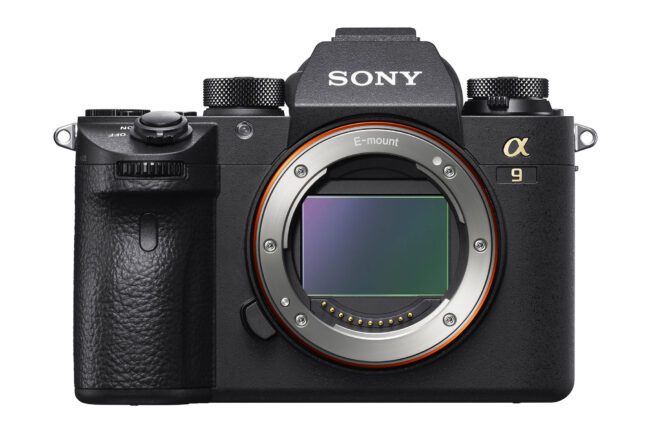


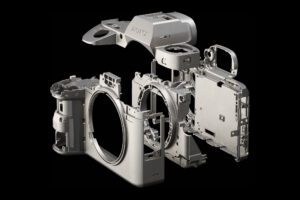
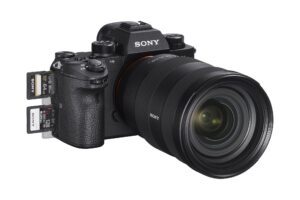
No comments:
Post a Comment